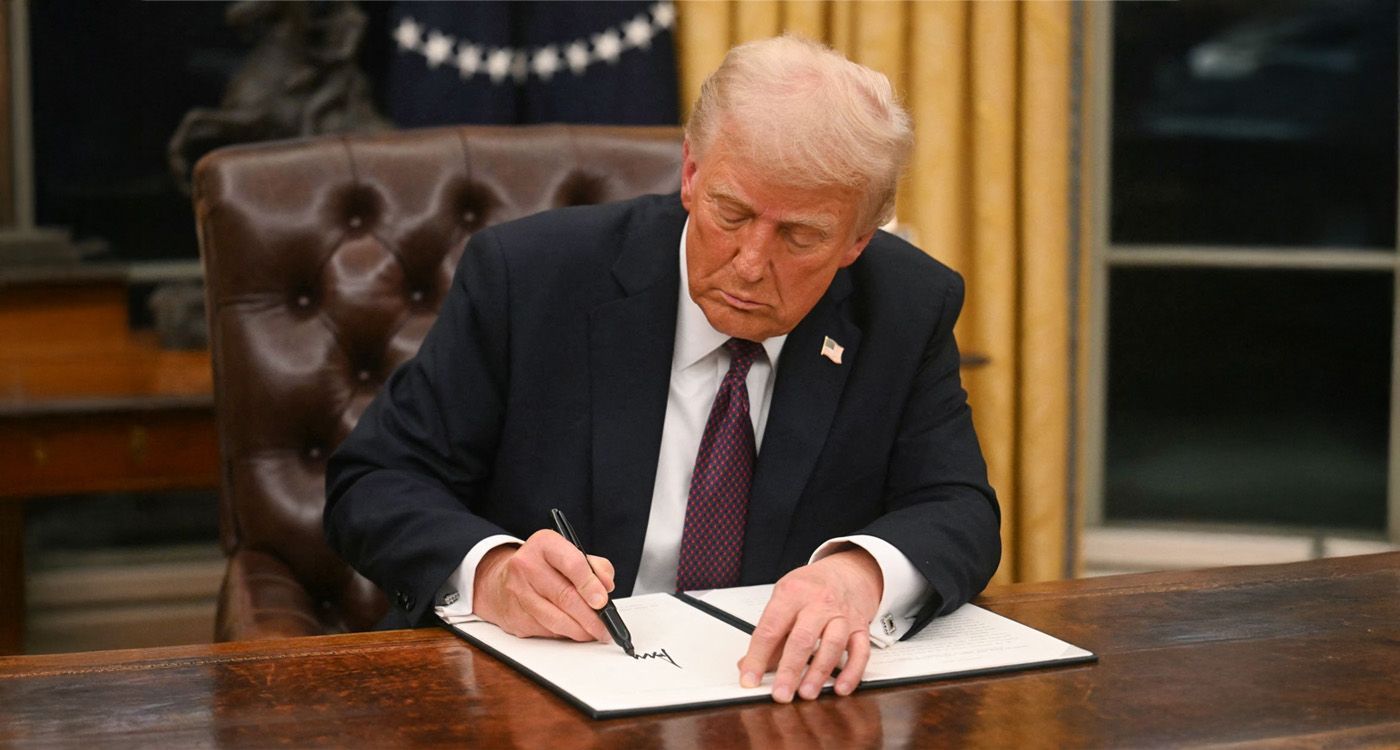- Home
- Middle East
- Tariff Crisis: Trump Redefines Global Trade

©Jim Watson / AFP
The Trump administration has upended the global economy by imposing new tariffs on key trading partners, including Canada, Mexico and China. While the two North American neighbors have secured temporary reprieves, China remains locked in a tense economic standoff with the United States. As tensions mount, the announcement of an imminent meeting between Donald Trump and Xi Jinping could mark a pivotal moment.
The Trump administration has disrupted the global economy with a series of dramatic announcements and last-minute negotiations, imposing new tariffs on key trading partners – Canada, Mexico and China. While Canada and Mexico secured temporary reprieves through emergency agreements, China remains entrenched in a fierce tariff standoff. Amid rising tensions, the announcement of an imminent meeting between Donald Trump and Xi Jinping underscores that diplomacy remains the ultimate arena for resolving a conflict with significant geopolitical stakes.
Trump’s Strategy
On February 1, in a move that sent shockwaves through global markets, President Donald Trump imposed 25% tariffs on Canadian and Mexican goods – excluding Canadian oil, capped at 10% – along with a 10% surcharge on Chinese imports. Trump positioned these measures not as mere bargaining chips but as a necessary response to massive trade deficits the US faces with its key partners.
Unilaterally enforced, the tariffs reflect Washington’s determination to correct what it views as unfair trade imbalances. With over 40% of US imports originating from Canada, Mexico and China, the tariffs are intended to compel a realignment of trade and security policies. Beyond economic concerns, the decision comes amid heightened tensions over fentanyl trafficking – a synthetic opioid 50 times more potent than heroin – and illegal immigration, which have been used to justify tariff-driven pressure and now serve as cornerstones of a protectionist strategy.
The announcements immediately rattled global markets, fueling volatility and raising concerns about the stability of international supply chains. As tensions escalate, tariffs have become a central tool of foreign policy, fundamentally reshaping the global geopolitical landscape.
Canada, Mexico: Last-Minute Deals
In response to the looming 25% tariff threat on its exports to the US, Mexico quickly opened emergency negotiations with Washington. President Claudia Sheinbaum confirmed on her X account that a “productive conversation” resulted in a one-month reprieve from the tariffs, aimed at temporarily de-escalating tensions.
As part of the agreement, Mexico committed to deploying an additional 10,000 soldiers along its northern border to enhance security and combat drug trafficking, particularly fentanyl. Described by AFP as a pragmatic move, this step underscores Mexico’s commitment to addressing US concerns while safeguarding its sovereignty.
Meanwhile, Canada, a crucial historical ally of the US, responded rapidly to the tariff threat. Prime Minister Justin Trudeau announced on his X account that Canada was taking decisive action in response to the American trade aggression. His plan, which includes a C$1.3 billion investment to strengthen security at the northern border and the appointment of a dedicated official to combat fentanyl trafficking, clearly signals Canada’s determination to protect its economy while preserving its vital relationship with the US.
Trudeau also urged Canadians to support local businesses and stand united in the face of the “challenging times” ahead.
China’s Response
Unlike Canada and Mexico, China has not received any reprieve in the ongoing tariff war. Washington has upheld a 10% surcharge on Chinese imports, a move President Trump justifies by citing a massive trade deficit and allegations of industrial dumping.
In retaliation, China has imposed 15% tariffs on US coal and liquefied natural gas (LNG), as well as 10% duties on other goods such as oil, agricultural machinery and large sports vehicles. These measures, set to take effect on February 10, form part of a strategic counterattack aimed at protecting key industries while challenging the legitimacy of US actions.
While condemning what it views as unfair trade practices, the Chinese government also filed a complaint with the World Trade Organization (WTO) to contest what it sees as punitive and unilateral measures. According to AFP, Beijing is defending its interests by stressing adherence to international trade rules, all while working to safeguard access to vital markets essential to its export-driven economy.
China’s approach sharply contrasts with that of its North American counterparts, who successfully negotiated temporary reprieves. Refusing to concede, Beijing has adopted a measured but resolute stance, risking the extension of a trade war whose ramifications could reach far beyond US-China relations.
Trump-Jinping Meeting: A Potential Turning Point
The upcoming meeting between Trump and Jinping is seen as a critical juncture that could, according to many observers, usher in a new phase of negotiations. If the dialogue succeeds in building trust and leading to mutual concessions, it could result in a reduction of tariff pressures on China. This could open the door to broader reforms in the international trade system. Conversely, without compromise, the escalation of protectionism risks fragmenting global trade and triggering widespread economic instability.
Trump aims to leverage the meeting to secure concessions from Beijing, accusing China of overlooking key issues such as the production of fentanyl precursors and industrial dumping.
Meanwhile, Jinping is under pressure to defend China’s position, condemning the tariff policies as punitive and destabilizing.
The trade war launched by the Trump administration extends far beyond bilateral disputes; it threatens to reshape the global economic landscape. The unilateral tariff hikes, coupled with retaliatory measures from other nations, could drive up business costs, disrupt supply chains, and ultimately stifle global economic growth.
Read more





Comments